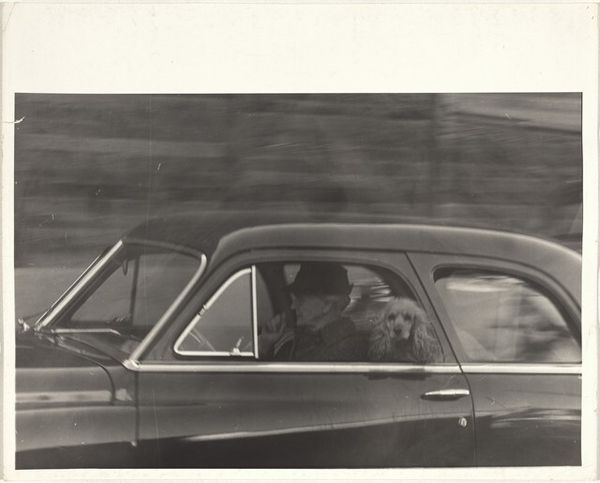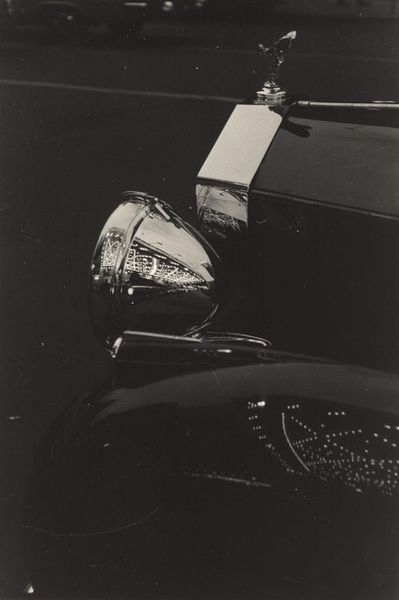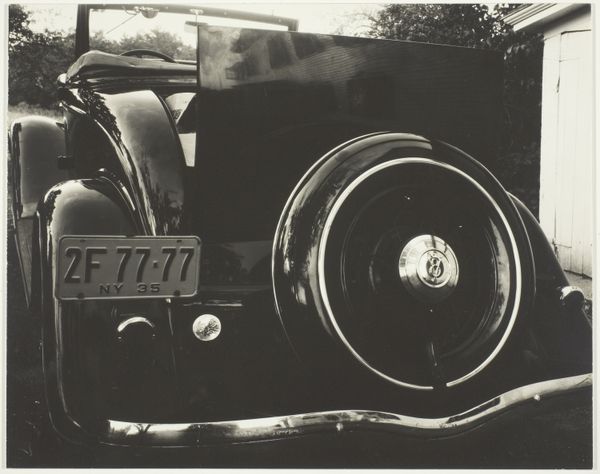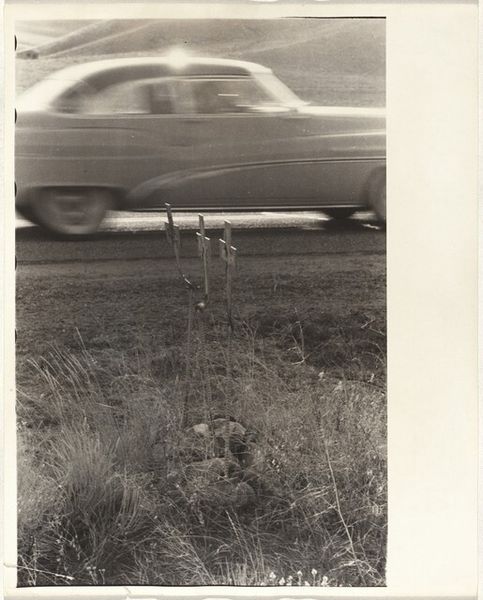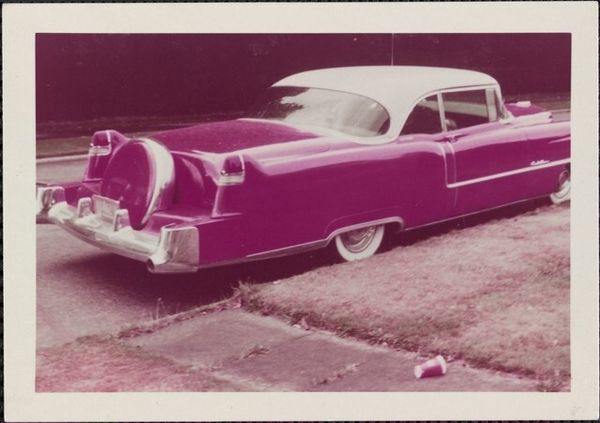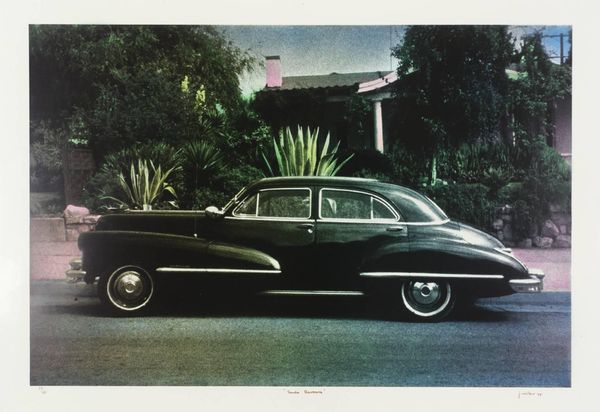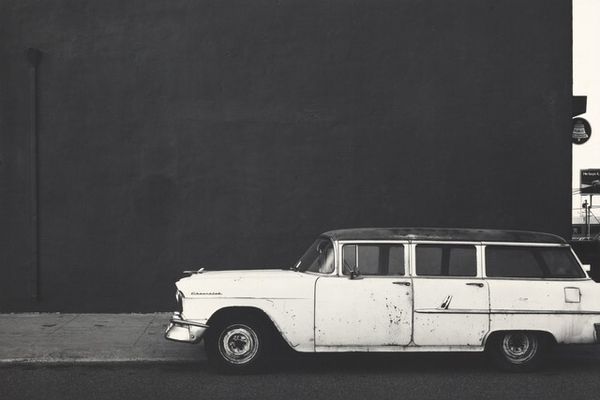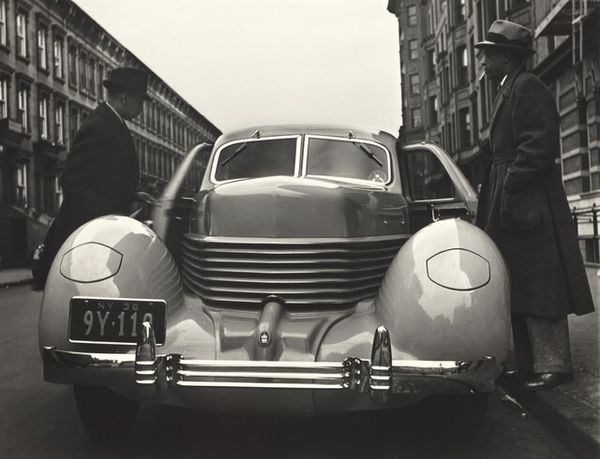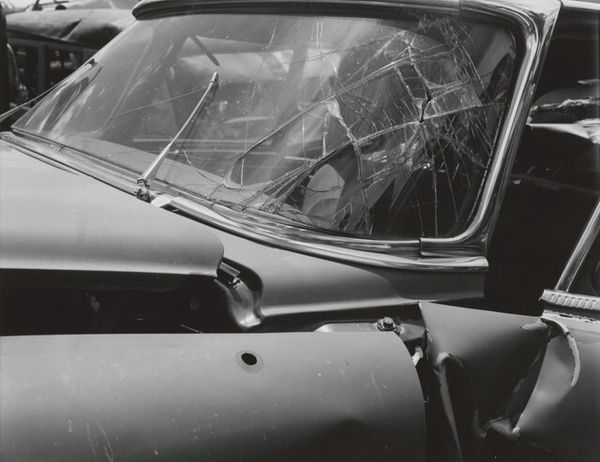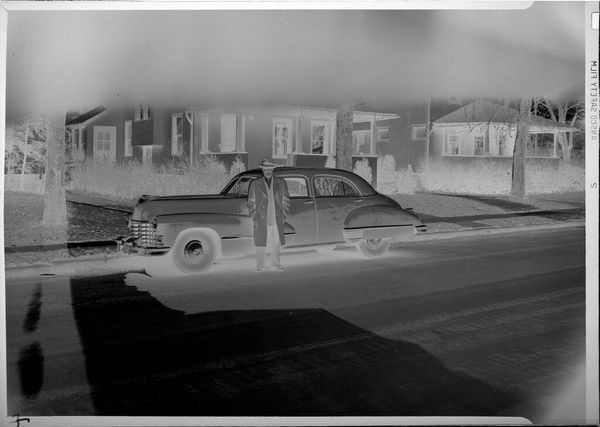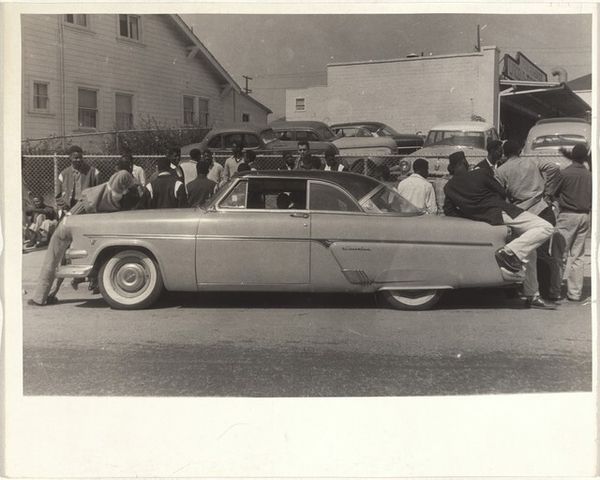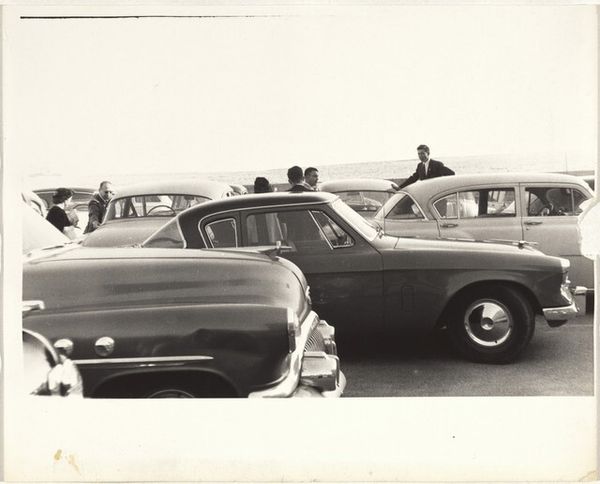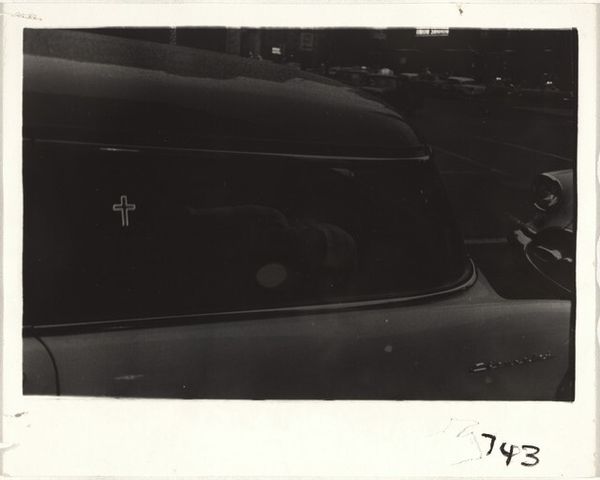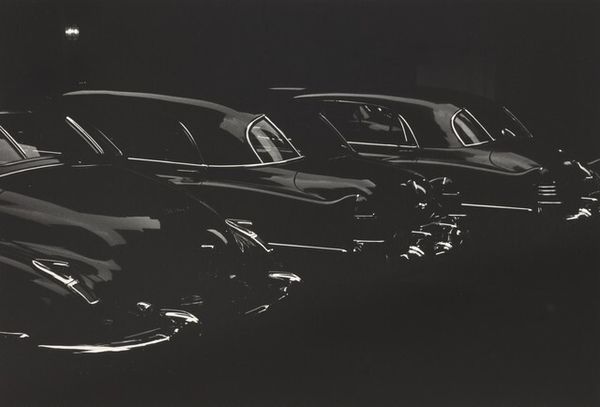
photography
#
technical car design render
#
automotive concept
#
conceptual-art
#
vehicle design
#
automotive
#
vehicle photography
#
car photography
#
automotive design photography
#
street-photography
#
photography
#
automotive photography
#
vehicle
#
car mechanical design
#
modernism
Dimensions: image: 16.4 x 23 cm (6 7/16 x 9 1/16 in.) sheet: 20 x 25.2 cm (7 7/8 x 9 15/16 in.)
Copyright: National Gallery of Art: CC0 1.0
Curator: Welcome. We're looking at Kenneth Josephson's "Stockholm," a gelatin silver print from 1967. Josephson, as many know, had a career committed to questioning photography's conventions, pushing its boundaries. Editor: Immediately, what grabs me is this intense flatness. Not just in the scene itself but the emotional affect of it. The car feels so solid, stuck almost, against the abstract-y gravel or paint patch. It makes me a little melancholy. Curator: Yes, that flatness is quite striking. It has a tension within its geometric forms, which Josephson achieved through meticulous cropping. Street photography, typically spontaneous, feels decidedly constructed here. Note how the placement almost slices the car in half—we can appreciate the social context, seeing the automobile's changing place within 20th-century society. Editor: Constructed is a great way to describe it! Because I’m also drawn to the stark contrast; the shadows are inky black, set against, as you said, very precisely considered placements. This isn’t about capturing a moment so much as building a feeling of, maybe, controlled chaos? Curator: Exactly. This relates to the way photographs can be staged or manipulated. Look at the framing itself; it positions this quite ordinary scene—a parked car—to confront much larger ideas around perception and reality. The modernist aesthetic certainly reflects influences like the New Bauhaus and their experimentation. Editor: You know, I see it. Bauhaus. Cold logic... it even seeps into my feelings about the thing, this sort of detached appreciation for a piece whose parts almost don't fit. The backdrop looks haphazard but also makes me wonder if I were dropped there how long it might take for someone to find me...I sound insane now, sorry! Curator: Not at all! I think what makes Josephson so enduring is that he welcomes these reactions. His pieces serve as starting points, interrogating viewers' assumptions rather than delivering any answers, which has certainly made him important to photographic discourse since the mid-20th century. Editor: I see. You know what, I'll take that melancholia. Knowing the artist's intentions really helps put these feelings, even my sillier interpretations, into perspective. Thanks for laying out its context, I’m seeing that initial reaction under a much brighter, critical light now.
Comments
No comments
Be the first to comment and join the conversation on the ultimate creative platform.
